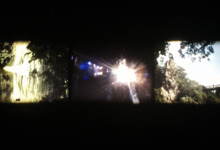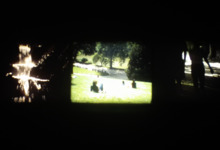
|
by Dominik LANGE
2007 / Super 8 / color-b&w / silent / 3 screens / 23' 57
|
The split-screen, anglicism translated into French as "divided screen" or "separate screen", is an effect consisting of dividing the screen into several parts, each of these parts presenting different images: several different scenes, or several different perspectives of the same scene.
It is a way of saturating the frame to accentuate the difficulty of perceiving, and thus increase the suspense or the gap between two scenes, source of different perceptions or humor.
The process was invented from the beginning of cinema with the game of caching and backtracking. It is nevertheless a trick that should not be perceived by the viewer, unlike the split-screen itself which is displayed as such. The split-screen is thus used sparingly in the silent cinema and before the appearance of the widescreen. The split-screen was really born only after the world exhibition of Montreal in 1967: Richard Fleischer and Norman Jewison will make the most brilliant use of it. But it is Brian De Palma who will make this a form intimately linked to the mysteries of his cinema. The split-screen is rather rare in contemporary cinema... which often does split-screen without a split-screen.
1 PRINT IN DISTRIBUTION
|
distribution format |
Digital file on server (FHD) |
|
version
|
triple projection |
|
screen |
16/9 (triple screen) |
|
speed |
29,976 fps |
|
sound |
silent |
|
rental fee |
97,00 € |




